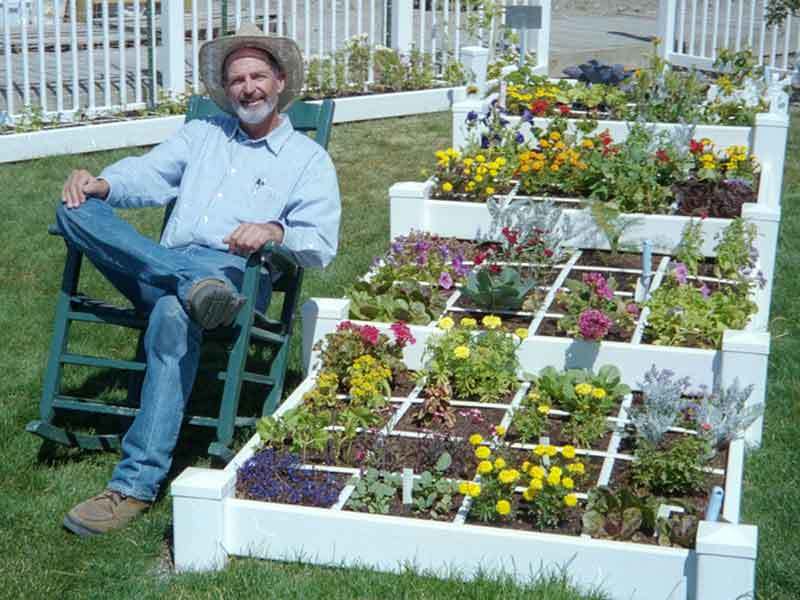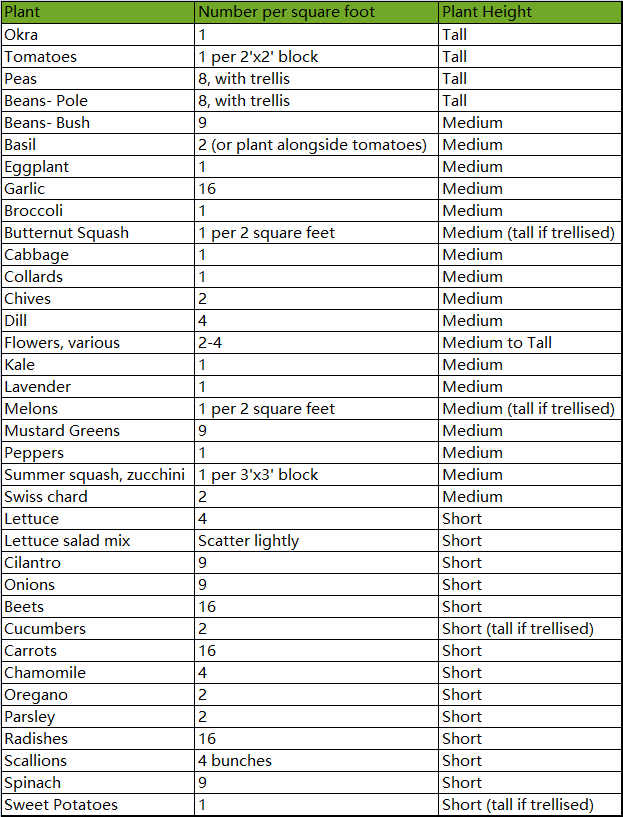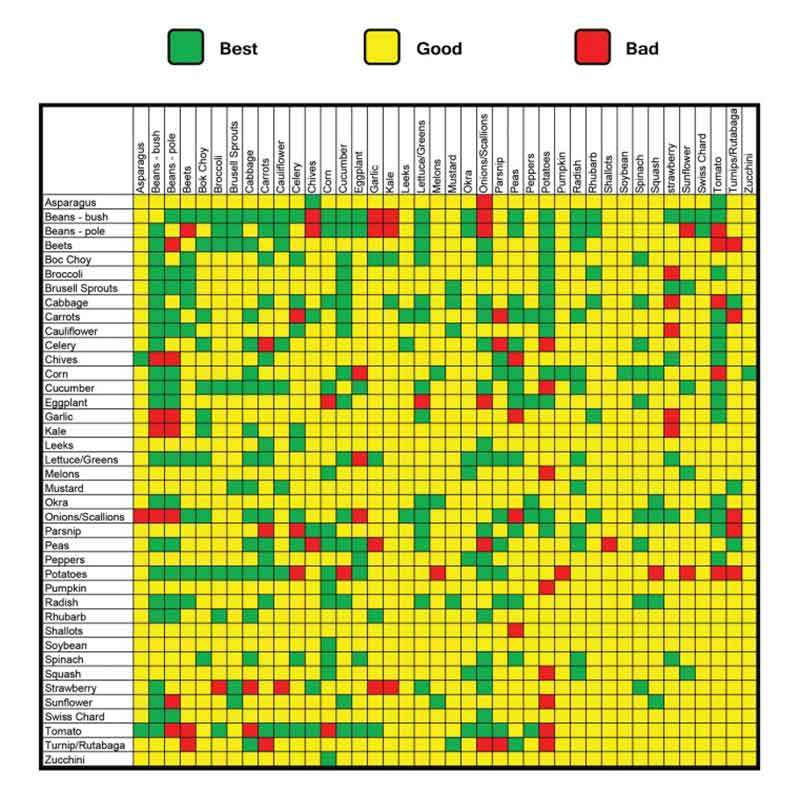Square Foot Gardening Planting Guide for Beginners
Introduction
Square foot gardening is a popular method of growing vegetables and herbs in a small space. Mel Bartholomew developed it in 1981. Square foot gardening has gained popularity due to its simplicity and efficiency. Instead of traditional rows of crops, square foot gardening involves dividing a garden bed into smaller, manageable sections.
What is Square Foot Gardening?
Definition and Principles of Square Foot Gardening
The concept is achieved by dividing a gardening area into small square sections, typically 1 foot by 1 foot, hence the name "Square Foot Gardening". Then, you can plant each section with a specific number of plants based on their size and spacing requirements.
The principles of square foot gardening are rooted in using time, space, materials, and effort efficiently. By focusing on smaller gardening areas, this method eliminates the need for large spaces and extensive weeding.
Square Foot Gardening Grid
The key element of square foot gardening is the grid system. This divides the gardening area into small squares for easy organization and maximized planting space. You can create square foot gardening trellis using various materials. For example, wood, string, or even chalk lines.
The number of plants in each square is determined by their size. For example, larger plants like tomatoes may require one whole square, while you can plant smaller ones like radishes 16 per square foot. Each plant will have enough space to grow and eliminate overcrowding.
Advantages of Square Foot Gardening
Space Efficiency
You can maximize the use of your available space and fit more crops into a small area by dividing the garden into small sections.
Higher Yields in Small Areas
With square foot gardening, you can increase your crop yield even if you have a small garden. The square foot garden method allows for tighter spacing between plants. This maximizes sunlight and nutrients for each plant, resulting in a higher yield.
Reduced Maintenance and Weeding
Since square foot gardening involves smaller sections, it is easier to maintain and weed compared to traditional row gardening. You will spend less time on maintenance and more time enjoying your garden.
Accessibility for All
Square foot gardening is an accessible method of gardening. Everyone can enjoy it, including beginners and those with limited space. It is a great way to introduce gardening to children or individuals new gardeners.
Setting Up Your Square Foot Garden
Choosing the Right Location
Choose a spot with at least six hours of sunlight per day. Most vegetable plants require ample sunlight to thrive. So make sure your garden is not shaded by trees or buildings.
The location should be easily accessible for watering, weeding, and harvesting. Consider placing it close to a water source and within reach of your gardening tools.
Building the Raised Beds
You can use a variety of materials to build raised bed square foot gardening. For example, wood, concrete blocks, or even recycled materials like old tires. Make sure they are 6-8 inches deep to allow for proper root growth.
The standard dimensions for a square foot garden bed are 4x4 feet. This provides enough space for 16 square foot sections. You can adjust the dimensions to fit your space.
Soil for Square Foot Gardening
A balanced mix of compost, peat moss and vermiculite is ideal. Compost provides essential nutrients. Peat moss helps retain moisture and aerate the soil. Vermiculite aids in water retention and nutrient delivery.
You can also add amendments such as bone meal, blood meal, and worm castings. These organic materials provide vital nutrients for your plants and help improve overall soil health.
Dividing Your Garden into Square-Foot Sections
This allows for easier planning and organization of your plants. You can use the square foot gardening tool to divide the garden into equal sections. For example, grids or dividers. It is easy to designate different plants to each section.
Square Foot Garden Design and Layout Tips
When laying out your square foot garden, consider the height and spacing of your plants. Place taller plants towards the back or center of the garden to avoid shading smaller plants. Pay attention to plant spacing to ensure optimal growth and prevent overcrowding.

Planting in Square Foot Gardening
Planning Your Planting Layout
You should consider companion planting and succession planting. Companion planting refers to growing certain plants together for mutual benefit. For example, you can plant marigolds alongside vegetables to repel pests naturally.
Succession planting involves staggering the planting of crops to ensure a continuous harvest throughout the growing season. This allows for maximum use of space and avoids overwhelming harvests.
Best Plants for Square Foot Gardening
Square Foot Gardening Tomatoes
Square Foot Gardening Cucumbers
Square Foot Gardening Lettuce
Eggplant Square Foot Garden
Square Foot Gardening Garlic
Potatoes Square Foot Garden
Zucchini Square Foot Garden
Square Foot Gardening Onions
Bush Beans Square Foot Garden
Square Foot Gardening Kohlrabi
Square Foot Gardening Brussel Sprouts
Arugula Square Foot Gardening
Cilantro Square Foot Garden
Okra Square Foot Gardening
Celery Square Foot Garden
Leeks Square Foot Gardening
Basil Square Foot Garden
Corn Square Foot Gardening
Zinnia Square Foot Gardening
Care and Maintenance
Watering Guidelines
Some efficient irrigation methods include using a square foot garden drip system, soaker hoses, or a watering can with a narrow spout. You can use a moisture meter to monitor it regularly. Or simply stick your finger into the soil about an inch deep. If the soil feels dry, it's time to water.
Fertilization Schedule
Organic fertilizers provide slow-release nutrients and improve soil health. For example, compost, worm castings, bone meal, and blood meal. Follow the recommended application rates for each type of fertilizer.
You should maintain balanced nutrients for plant growth and productivity. Too much or too little of certain nutrients can cause deficiencies or excesses, leading to stunted or unhealthy plants. Regularly testing your soil's pH levels. Determine if any adjustments need to be made.
Weeding Strategies for a Low-Maintenance Garden
Mulching can block out sunlight and prevent weed seeds from germinating. Additionally, spot weeding techniques involve removing weeds as soon as they appear before they have a chance to establish deep roots.
Troubleshooting Common Issues
Dealing with Pests in a Confined Space
You can use physical barriers to keep pests away from your plants. For example, nets or row covers. Encourage natural predators such as ladybugs or praying mantis to control pest populations. Use organic insecticidal soap or neem oil to get rid of pests without harmful chemicals.
If you notice any signs of pest damage, act quickly before the infestation spreads. Regularly inspect your plants for any signs of pests. Take appropriate measures immediately.
Disease Prevention and Control Measures
You should use disease-resistant varieties. Providing proper air circulation by thinning out overcrowded plants. Watering at the base of the plants instead of overhead to prevent fungal growth. Remove the affected plants immediately if you notice any signs of disease. For example, discolored or wilting leaves.
Recognizing and Addressing Nutrient Deficiencies
Since square foot gardening relies on a small amount of soil, so ensure your plants get the necessary nutrients. Signs of nutrient deficiencies include yellowing leaves or stunted growth.
You can amend your soil with organic compost or fertilizers. Rotate crops to prevent nutrient depletion in the soil. Use foliar sprays or liquid fertilizers for quick absorption by plants. Regularly monitoring and addressing any nutrient deficiencies.
Harvesting the Fruits of Your Labor
Knowing When to Harvest
One key factor in determining when to harvest your crops is their maturity date. This information is usually provided on the seed packet or plant label. However, this date is an estimate and not a definite timeline. Weather and growing conditions can affect the maturity of your plants.
You can also pay attention to their size and color. Different vegetables have different optimum sizes and colors when they are mature. For example, carrots should be about 1 inch in diameter and bright orange in color, while tomatoes should be fully red and slightly soft to the touch.
Tips for Maximizing Flavor and Nutrition
You can harvest in the morning before the sun gets too hot. The plants are fully hydrated. This will ensure maximum flavor and nutrition. Handle your vegetables with care during and after harvesting. Rough handling can damage cells and lead to a decrease in quality.
After picking, store your produce in a cool and dry place. For root vegetables, it's best to remove the greens before storing. Because they can draw out moisture and cause spoilage.
Square Foot Garden Planting Chart
Square Foot Gardening Spacing Chart

Companion Planting Square Foot Garden Chart

Conclusion
We have provided you with the necessary information to start your square foot gardening journey. We highly encourage you to give square foot gardening a try.



